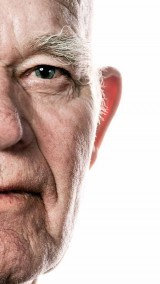The prospect of a fresh curriculum framework presents history co-ordinators with a rare opportunity, says the Caroline Heal
What could be more important than knowledge and understanding of the world? Being a subject leader in history is a great professional opportunity and one to grasp with both hands.
At this point in primary education, you may be taking on history as ‘historical, geographical and social understanding’ - the ‘area of learning’ designated by the Rose Review to incorporate history - or as ‘place and time’, as proposed by the independent Cambridge Primary Review.
Teachers and schools have generally welcomed the prospect of a new curriculum framework from 2011, with more freedom to decide what and how they will teach. Whichever political party forms a government, the signs are there will be more emphasis on making the curriculum relevant to the particular children in your school; on working from, with and in the local community; on learning for citizenship (personal, local and global); on learning to learn, and on developing emotional literacy. There will be less prescription of particular topics and more room for schools and teachers to decide. This is all positive.
So what are the challenges in taking the lead in co-ordinating history, or history and other subjects, in a broad ‘knowledge and understanding about the world’ framework?
 The first challenge will be to review, with colleagues, the state of your subject knowledge. History is a big subject; there is so much of it, and therefore so much to choose from! Avoid the trap of thinking about what to teach across the school until you have addressed your aims for the children in learning about the past, the concepts underlying the subject and the possible links with ther subjects. In its Primary History journal, the Historical Association criticised the Rose Review for emphasising aspects of ‘coverage’ rather than curriculum models designed to ensure progression in children’s development of concepts and skills. Teaching for progression in historical understanding is one of your biggest challenges.
The first challenge will be to review, with colleagues, the state of your subject knowledge. History is a big subject; there is so much of it, and therefore so much to choose from! Avoid the trap of thinking about what to teach across the school until you have addressed your aims for the children in learning about the past, the concepts underlying the subject and the possible links with ther subjects. In its Primary History journal, the Historical Association criticised the Rose Review for emphasising aspects of ‘coverage’ rather than curriculum models designed to ensure progression in children’s development of concepts and skills. Teaching for progression in historical understanding is one of your biggest challenges.
Progression in understanding is not just a matter of learning more complex stories about new aspects of the past. It has to fit in the development of a ‘bigger picture’. When children encounter something new they need to relate it to the understanding they already have. One example is putting things in order, or developing chronological understanding. At the earliest stages this involves learning about the past in your own life and family history, and about short-term change within your experience at home, school and in your neighbourhood. This focus in the early years has always been appropriate and teachers generally feel comfortable with it. Later on, it includes fitting new accounts onto a mental timeline, making connections, developing concepts and moving towards historical explanation, which is much, much more demanding.
At the same time there are two kinds of conceptual framework in history to build up. There are the concepts to do with the ‘stuff’ of history – for instance grasping the many substantive concepts related to particular aspects of the past. Some of these relate to physical things that can be seen and touched, like a loom or a washboard, some are ‘roles’ such as monarch or rebel; some are processes like trade or enslavement. Then there are the conventions of the language of time to absorb: century, decade, era, the Victorians or the Industrial Revolution, etc.
Secondly, and most importantly, understanding history depends on developing the underlying concepts of the discipline, such as cause/consequence, continuity/change, evidence,explanation and interpretation. These are crucial in influencing the processes of historical enquiry that underpin authentic learning in this area.
 Schools have important decisions to make. Many have been using the QCA schemes of work and now have the opportunity to move away from them. Some schools have developed units of work of their own and built up collections of resources that are still fit for purpose, but this is a great opportunity for a rethink; a chance to re-shape the curriculum with overall coherence and relevance for the children in the school and community as the main goal. In addition, we are being urged to make appropriate connections between subject areas so there is more depth and wholeness.
Schools have important decisions to make. Many have been using the QCA schemes of work and now have the opportunity to move away from them. Some schools have developed units of work of their own and built up collections of resources that are still fit for purpose, but this is a great opportunity for a rethink; a chance to re-shape the curriculum with overall coherence and relevance for the children in the school and community as the main goal. In addition, we are being urged to make appropriate connections between subject areas so there is more depth and wholeness.
So, there are challenges here:
• To develop a progressive model of content (what topics to teach from year to year)
• How to progress children’s understanding and skill (through these topics) in relation to the bigger picture (chronology),
• To develop understanding of the key historical disciplinary concepts.
Especially for the older children we need to find real historical dilemmas where there is, in Dewey’s words, ‘a felt difficulty’, ‘some perplexity, confusion or doubt’ - a historical riddle where the answer isn’t clear-cut and there’s something for children to puzzle over and debate, so that their thinking is challenged.
A further responsibility for the effective coordinator is developing resources for the school. One useful starting point would be to work together as a staff to develop source material related to the history of the local community, that is, the place and the people. Shared research generates professional cooperation and dialogue. Make links with local museums and library collections and involve staff there in the project over time. The research could relate to physical aspects of the local environment. It could include assembling census returns for local streets, trade directories, parish registers and local maps from different periods. These could relate to themes such as housing, shopping and transport.
Local people can easily be persuaded to contribute their memories and special stories if approached in the right way. Draw up lists of those who would be willing to come and talk to the children; find ‘experts’ like local archivists or archaeology groups. Make digital video/audio records of people and places from nearby and assemble collections of old photos to compare over time. Gather evidence of the history of local communities. Some of this can be face to face, and cheap digital technologies make it easy to record and save.
Finally, have a good look at the revised history curriculum for KS3. The revisions for the primary phase will take KS3 requirements into account, and being aware of what’s in it will inform your thinking.
Caroline Heal is lecturer in primary education at the Institute of Education.
Improve history lessons with help from the IOE…
• Creative History Teaching: a cross-curricular approach - 16th June 2010 Outline: This course provides teachers with an opportunity to develop exciting and motivational ways of teaching history. It also allows us to consider how history fits into the primary school curriculum in the 21st Century. Ref: DC173-10C1
• MA History of Education - start dates: April, October or January Duration: 1 year full-time or 2 years part-time
• MA Museums and Galleries in Education - start dates: April (part-time only), October or January Duration: 1 year full-time or 2 years part-time
• Social History of British Education (MA module or stand-alone short course) - start date: April Duration: 1 term
For further course details, visit ioe.ac.uk or call 020 7612 6000
KS2 Lesson plan: China and Buddism
Ace-English
Why every child should feel at home in an art gallery
Ace-Art-And-Design
